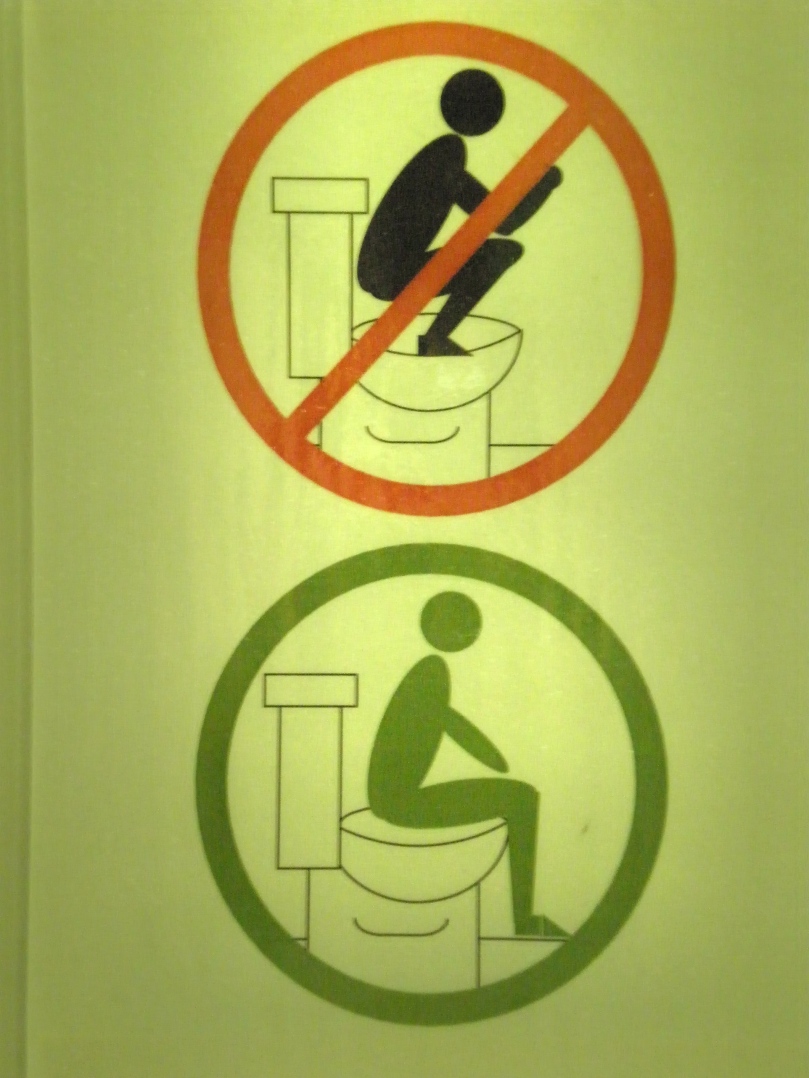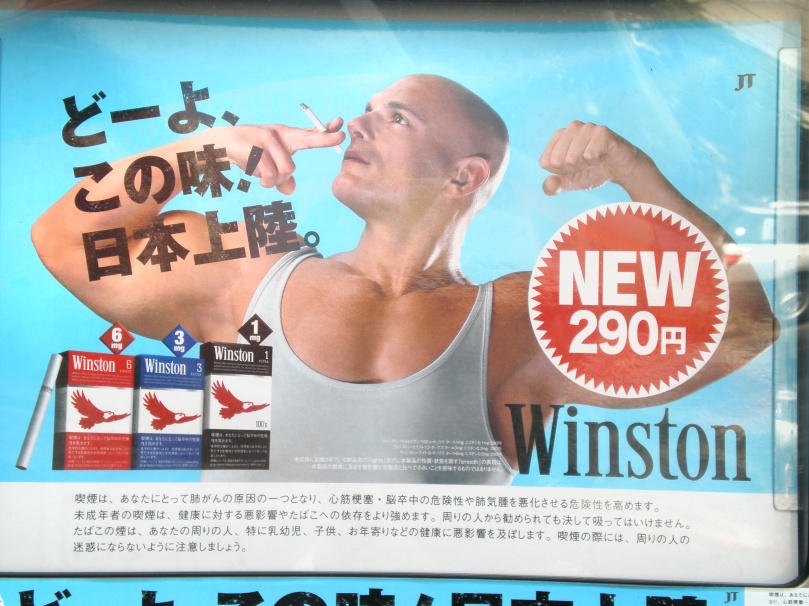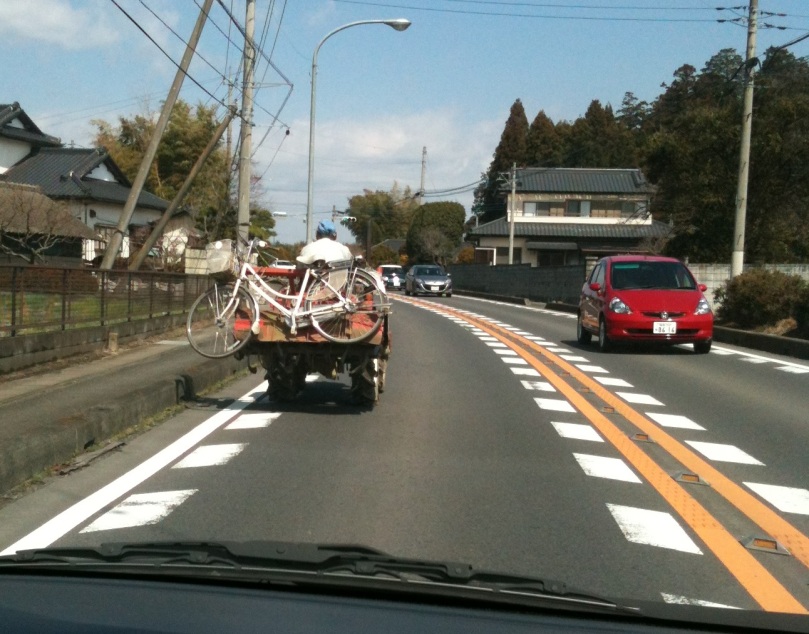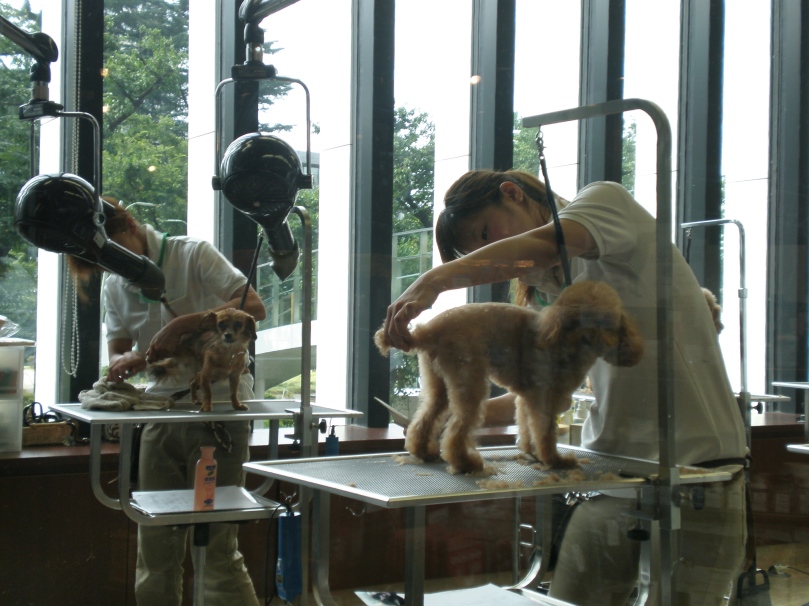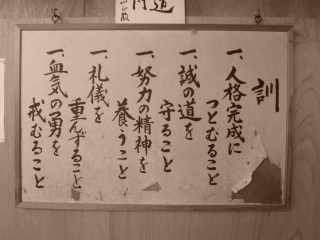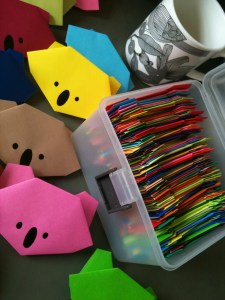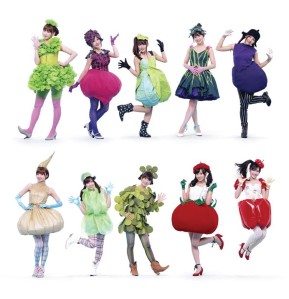My karate career may have just ended but for eight months of 2011, I thought of myself as The Karate Kid. True, my sensei was Takamura, not Miyagi and I wasn’t an American teenage boy lusting over the cute 1980’s version of Elisabeth Shue…but in many ways my karate experiences were just as bewildering and amusing as Daniel LaRusso’s were in the ’84 teen movie.
Like LaRusso, I’m tough and I am known for my (extremely) competitive nature. No one can say I shy away from any physical challenge. So it mortifies me that since moving to Japan, my fitness has taken a huge nose dive. Between the severe shortage of properly equipped gyms and a lack of netball and squash in this country, my favourite fitness fixes have been completely unavailable to me. So for a while, karate came along to patch up this great gaping hole in my life.
My friend (and personal trainer) asked me, ‘Why karate?’ Having had no prior experience with martial arts and no previous apparent interest in it either, I guess this was a fair question for him to pose. My answer…’Why not?’ I live in Japan, I enjoy Japanese culture…why not try one of their most famous exports to the world?
Miyagi: We make sacred pact. I promise teach karate to you, you promise learn. I say, you do, no questions.
Takamura: So you want to learn karate?
Me: Yes.
Takamura: Why?
Me: I like Japanese culture and I want to try karate.
Takamura: (unconvinced) Mondays, Thursdays and Fridays, 6-8pm.
Me: Ok, I can come Mondays and Thursdays. How much are the classes?
Takamura: (still unconvinced) For you, it’s free. I make the kids pay, but you don’t have to.
Pre earthquake I had discussed the possibility of trying out a Japanese martial art (there are a few…aikido, kyudo, judo, karate, kendo) with a friend…let’s call him Mr.Ex. Post earthquake, Mr.Ex called to say he had been invited to see a karate dojo…and asked if I was interested in taking a look too. One of Mr.Ex’s teachers introduced us to Takamura Sensei and we watched our first karate class. In the months that followed, each two hour class was different and I never really knew what to expect…from my senseis, from the kids I learnt with, or from myself…
Daniel: Well, where did you learn karate?
Miyagi: Father.
Daniel: But I thought he was a fisherman.
Miyagi: In Okinawa, all Miyagi know two things: fish and karate. Karate come from China, sixteenth century, called te (hand). Hundred year later, Miyagi ancestor bring to Okinawa, call karate (empty hand).
Daniel: I always thought it came from Buddhist temples and stuff like that.
Miyagi: You too much TV.
Daniel: That’s what my mother tells me.
Me: What kind of karate is this?
Takamura: (points to the jumble of kanji on the wall)
Me: Ohhhh…I see (clearly not seeing)
Takamura: (a week later, presents me with a Wikipedia article and the dojo-kun, complete with English translation) This is about karate. Please read.
According to the Wikipedia article Takamura gave me, I was a member of a Shotokan Karate Dojo. Shotokan karate is known for it’s three components: kihon (basic movements), kata (patterns of movements) and kumite (sparring). The first two ‘k’s’ I enjoyed thoroughly…kihon and kata appealing to the perfectionist in me. Every week, in and out of the dojo, I would spend hours trying to get the movements just right in a bid to earn an ‘umai’ (skillled) or ‘ii’ (good) from Takamura Sensei. I would often catch myself absent-mindedly practising kihon in the shopping isles or in the halls at school…much to the amusements of those around me.
Kata was absolutely my favourite part of Shotokan and while I only learned up to the second kata sequence (Heian nidan) I would quite happily repeat the first (Heian shodan) over and over. In some ways the movements remind me of Tai Chi which I practised for a brief time in high school. The combination of movements is somewhat meditative and if executed well, entrancing to watch. According to my trusty Wikipedia article there are 26 of these patterns to learn, so I didn’t make it very far into them.
As for the last of the three k’s…kumite (sparring)…it was my least favourite part of each class. Who knew it, but apparently I’m a lover, not a fighter?! I dreaded it when Takamura uttered the order to get our sparring gloves on as I knew I was about to get my butt kicked for the next 20 minutes by a black belt karate sensei. The only time I quite enjoyed kumite was on Thursday nights when Mr.Ex was attendance and Takamura encouraged me to hit him as hard and as often as possible. I mean who doesn’t want to beat up on their Mr.Ex?!
Miyagi: (showing Daniel around family dojo) Aha…here are the Two Rules of Miyagi-Ryu Karate. Rule Number One: Karate for defence only. Rule Number Two: First learn Rule Number One.
Students: (line up and sit in seiza position)
Motoki: Quiet!
Students: (obey and become quiet)
Yoppi: (farts)
Students: (start giggling uncontrollably)
Takamura: (getting his angry face on) You must be quiet during seiza! No noises allowed. Not from your mouth, not from your butt! Karate is serious. It’s budo (a martial art).
Hikaru & Akari (twins): (looking confused) Budo? (which means grape too) Can we eat it?
Takamura: (starts giggling)
The rules of the dojo are embodied in the dojo-kun, which was read at the end of every class and is taken very seriously:
First. Seek perfection of character.
First. Protect the way of the truth.
First. Foster the spirit of effort.
First. Respect the principles of etiquette and respect others.
First. Guard against impetuous courage and refrain from violent behaviour.
Each two hour karate lesson follows the same pattern: one hour of kihon, cleaning time, kata, kumite then the reading of the dojo-kun and the giving out of omiyage (souvenirs from anyone who has travelled) at the very last. Aside from the dojo-kun, there are no strict rules. Everyone is encouraged to take the lessons seriously, idle chatter is generally discouraged and no unauthorised fighting is permitted. All rules which I saw broken every single lesson.
Daniel: Hey, what kind of belt do you have?
Miyagi: Canvas. JC Penny, $3.98. You like? Daniel-san…(taps head) karate here, (taps heart) karate here, (points to belt) karate never here.
Moika, Akari, Hikaru, Sora: (swamping me on arrival to class one day) Look, look, we all got yellow belts at grading yesterday!!!
Me: Congratulations! (heart sinking and ego deflating as I become aware I am the only white belt left in a room of people half my size)
The first time Takamura Sensei showed me some real respect was when I turned up to class in my karate-gi about two months in. I guess he figured if I had spent the time and money getting the uniform, I must have been someway serious about karate. The kids went mental too and got super excited when they saw I went to the extra effort of getting my name embroidered onto the gi…brownie points for me!
Despite Miyagi’s claims that karate isn’t about the belt…the first question anyone asks you after telling them you do karate is always ‘what colour belt are you?’ Technically I was of no colour…having not even taken the grading exam for white belt, so I was the lowest of the low. According the the progression of Shotokan Karate, the ladder to climb is this: white, yellow, green, purple, brown, black and then the levels of black belt that follow that…
One of the kids at the dojo, Motoki, is a black belt already at the age of 11. Most of the kids in Japan start karate (or any sport) from the time they are around four and are experts before they even reach junior high school. What I came to realise during my eight months at the dojo is that learning karate while young, supple and flexible is a far better option than starting when you are thirty, inflexible and injury riddled.
I would have loved to work my way up to black belt level in karate, but I’m just not sure my body would have allowed me. In no reality (this one or any other) did I expect to get to black belt in the five or so years these kids can. My lovely friend Ms. French Black Belt informed me that it has taken her the better part of the last 18 years to get to her recently acquired black belt. Judging by this scale I could have been a black belt by the time I’m around 50. With that in mind, I think Miyagi was onto something saying it’s not about the belt…
Daniel: Hey, you got a name?
Ali: Ali…with an l. Hey, what’s your name?
Daniel: Daniel…with an l.
Akari: (playing with the hairs on my arm) White hair.
Me: Yes.
Akari: (looks at me earnestly) Are you a rabbit?
Me: (rolling my eyes) Yes, I’m a rabbit.
Akari: (face innocent) Can you be my rabbit?!
Me: (sighing) Ok.
Akari: Rabbit (resuming her play with the hairs on my arm)Depending on the kid and their mood, I gained a few of different names at karate class. Hinata and her older sister Haruhi are racist and refused to call me anything other than ‘that foreigner’, while refraining from talking or looking at me as much as possible. I treated them with the same reciprocal detachment.
The rest of the kids are far more affectionate and aside from the twins (Akari and Hikaru) ocassionally calling me ‘Rabbit’, towards the end of my karate days I was mostly referred to as ‘Nene’. This term pretty much means ‘big sister’ and it gave me a little kick of pleasure every time I heard the kids say it…which was often. ‘Nene, look at this’ ‘Nene, pick me up’ ‘Nene, let’s play tag’ ‘Nene can I play with your hair?’…
Miyagi: (makes circular gestures with each hand) Wax on, right hand. Wax off, left hand. Wax on, wax off. Don’t forget to breath, very important. Wax on, wax off…
Students: (butts in the air, wash rags poised in position on the floor)
Kota: GO!!!
Students: (race from one side of the dojo to the other, screaming with glee)
Just like school, I wasn’t exempt from cleaning time during karate class. During the mid-lesson break, Takamura would utter the word ‘souji (cleaning)’ and Kota was off to get a bucket of water while the rest of us grabbed our cleaning rags. Unlike the famous ‘wax on, wax off’ scene in The Karate Kid though, cleaning time is not for the furthering of karate skills…I’m pretty sure it’s just so Mrs.Takamura has one less room to clean every day.
John Kreese: Sweep the leg. (referring to Daniel’s injured leg)
Johnny: (stares in shock)
John Kreese: Do you have a problem with that?
Johnny: No Sensei.
Sora: ‘ich, ni, san, go (1, 2, 3, 5)’
Takamura: Idiot, you missed 4! (flicks him on the forehead)
Punishment is the area of karate class where Takamura has taken lessons from John Kreese and not Miyagi. He is brutal and I pretty much witnessed at least one child cry every class during my time at the dojo. Unlike in other developed countries, Japan has yet to jump on board the ‘no physical punishment’ band wagon, so if you mess up in class you are fair game.
The punishment always fits the crime…so Sora, Yoppi and Minso (as the youngest kids) are often the recipients of the forehead flick…mostly issued for the misdemeanour of counting infringements. The severity increases from there…a light face slap will be issued for excessive talking, or distracting the other kids…two kids will find their heads being knocked together for non authorised fighting and the worst I have seen is a full strength face slap or kick to the stomach, usually issued if one of the kids continues to play up after having already been dealt a few other warnings.
Thankfully (either because I am an adult, because I am a girl, because I am a foreigner…or all of the above) I was exempt from these punishments. Having said that, Takamura still derived a great deal of pleasure from hurting me too…he just did it during sparring time. It was typical for me to have bruises along my left forearm and my shins after most classes and I was reduced to tears on a few occasions from a good head hit too. The worst was a few months back when Takamura laid a John Kreese style leg sweep on me and I took the full weight of my body on my right elbow as I hit the floor. This physical pain is nothing on the injury to my ego though, knowing that a 68 year old man had knocked me to the ground.
Official: Hold it. Only teachers and students on the competition floor. I’m sorry.
Daniel: Oh, but he doesn’t speak English and I can’t understand his instructions without her (Ali). She’s his translator.
Miyagi: (Says something in Japanese)
Official: What did he say?
Ali: He said you reminded him of an uncle of his in Tokyo.
Official: (flattered) Well, I guess it’s all right.
Miyagi: (Says something in Japanese again)
Official: What’s that?
Ali: He says you’re very kind.
Official: Thank you.
Hosogai: So I hear you are an English teacher in Omiya?
Me: Yes that’s right.
Hosogai: Do you enjoy teaching English?
Me: (sensing a trap forming) Yes I do, it’s good fun.
Hosogai: So you were a teacher before you came to Japan then?
Me: No actually, I was an interior designer.
Hosogai: Oh (taken aback slightly, but undeterred). Well I was wondering, if it’s not too much trouble, if you are able to, I was thinking maybe, if it’s ok with you, it would be a great chance for the kids, do you think you might be able to, would it be alright, if maybe you could, just for ten minutes, just at the end of the class, just a short time, if you would be so kind, could you maybe, please teach the kids some easy English?
It’s a universal truth, known to all foreigners living in Japan that it is in fact impossible to say no to a Japanese person. Especially when they spend the better part of 20 minutes building up to a request using their very best, over flowery, politely flattering language. So when Hosogai Sensei (one of our occasional, fill in Senseis) asked if I could give the kids a ten minute English lesson at the end of each karate class, I was powerless to refuse.
Secretly I dreaded the thought and feared that the kids would hate me for the forced schooling they were about to receive. I had very low expectations going in, considering that any time Mr.Ex and I even said hello to each other in English, the kids erupted with screams of ‘Eigo kinshiiiiiiiiiiiii (English is banned)’.
But, bless the little mites, they approached those ten minute sessions with more gusto than they give the two hours of karate that precedes it. In our very first lesson I discovered that there are two native English speakers in the class. The revelation came when Minji answered ‘I don’t like high places’ to my question ‘what do you like?’ Slightly taken aback by such an articulate answer from an eight year old, I questioned him about his English. Turns out he and his brother Minso had been flying under my radar for three months…failing to mention to me that they were born in Australia and lived there until last year when they moved here to Japan.
Aside from this astounding discovery, the English sessions were the best entertainment of my entire week before I quit. I got to watch 16 crazy kids beat themselves and each other silly all in the name of learning English…and trying to impress me. With body slamming, nose dives and tears standard procedure during English time, it was fast becoming one of the most dangerous part of the karate lessons each week. Luckily the kids get to continue their English lessons even in my absence, as Mr.Ex is now taking over the role for me.
Daniel: I know you don’t believe in fighting, but tournament karate isn’t exactly fighting.
Miyagi: Not exactly ping pong either.
Takamura: Are you coming to the tournament next week?
Me: Yes, I want to come.
Takamura: Do you want to participate?
Me: (starting to panic), Err, umm, sure…
Takamura: Yes, you want to?
Me: (with more conviction) Yes, I want to.
Takamura: (wanders away and starts pouring over some papers in the corner and mumbles to himself)
10 minutes later…
Takamura: There’s a problem.
Me: Oh?
Takamura: (pointing to the tournament draw) There are no other adult white belts competing, so you can’t participate.
Me: Oh, what a shame (relieved), I’ll just watch this time then.
As I finish writing this entry three months after starting it, much has changed for me in regards to karate. Over the course of winter break I thought long and hard about my future karate career and whether I could dedicate myself to the art long term. It was a difficult decision to make, but as my goals and aspirations for my final year in Japan take shape, I realised that karate does not have a place amongst them.
Takamura Sensei and the kids were graciously understanding about my resignation (the ANZAC biscuits helped soften the blow) and I have been told I am welcome back any time for a visit. I have every intention of taking Ms.French Black Belt to the dojo for show and tell on her upcoming visit to Japan and I will pop in on the kids from time to time just so they don’t forget who I am. It was great fun being a Karate Kid for a while, but I think I’ll leave the serious stuff to Miyagi and Daniel.
Miyagi: Lesson not just karate only. Lesson for whole life. Whole life have a balance. Everything be better. Understand?
SHARE PAPERDOLL'S MUSINGS...







